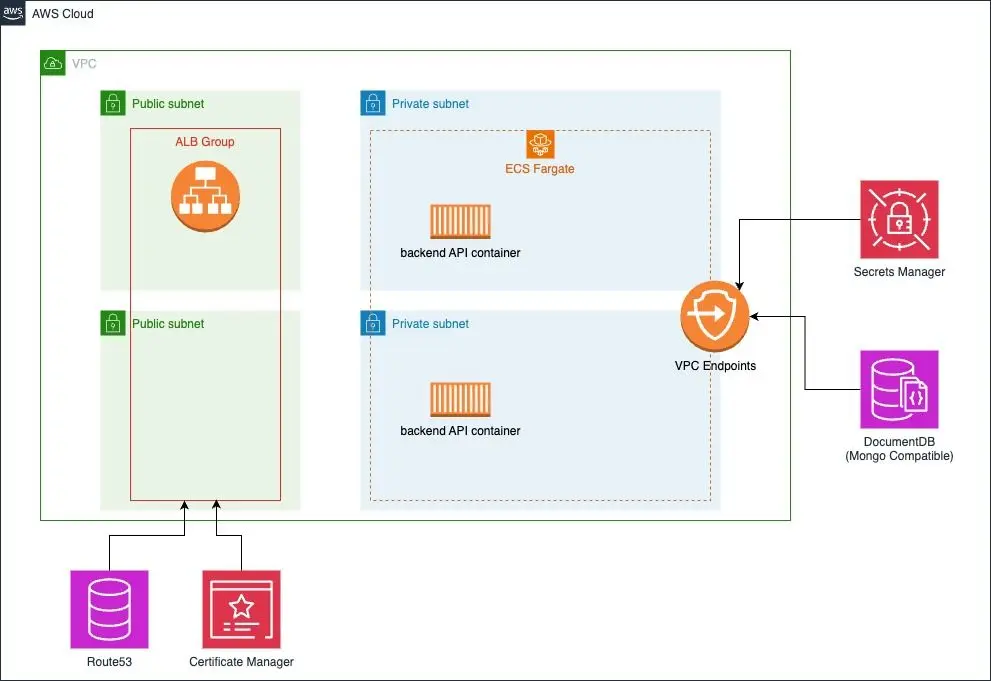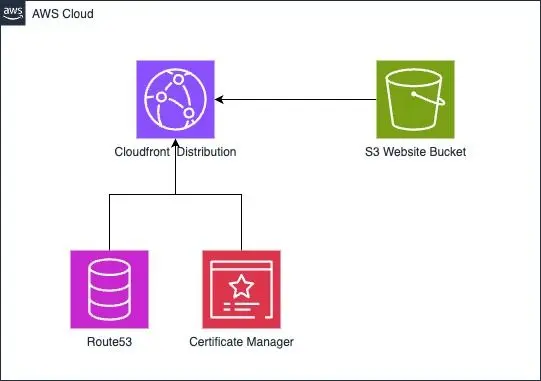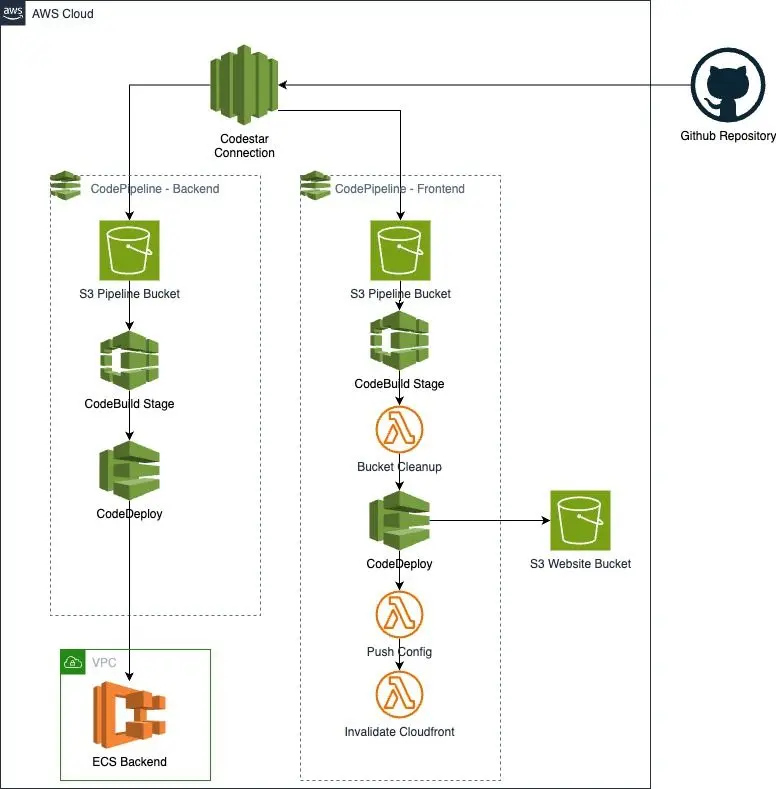In today's ever-evolving cloud ecosystem, choosing the right provider for an effective Continuous Integration and Continuous Deployment (CI/CD) experience has become challenging. Both beginners and intermediates find setting up a CI/CD pipeline daunting due to a maze of configurations, best practices, and platform-specific intricacies, especially for straightforward applications like a "ToDo" application.
In part 1 of the series, "Cloud CI/CD Showdown," the aim is to demystify the CI/CD setup on AWS for users. A clear, step-by-step guide to deploying a "ToDo" app is offered, ensuring that each step is presented in a structured and digestible manner.
Rather than delving into overwhelming technicalities and vast documentation, the approach is concise and actionable. By the end of this series, readers will not only have a 'To-Do' app actively running on AWS but also a comprehensive understanding of each deployment stage.
The goal is to equip readers with the confidence and expertise to establish similar setups for diverse applications and appreciate the unique strengths AWS brings to the CI/CD arena.
Dive in to navigate the intricacies of CI/CD on AWS, streamlining the complex into the comprehensible.
This post will walk through deploying a Todo application on AWS using Elastic Container Service (ECS) and a DocumentDB Mongo-Compatible Database. The application comprises a NodeJS Web API written with ExpressJS and a frontend user interface written with ReactJS. This example is typical of the MERN (Mongo, Express, React, Node) design pattern.

The frontend will be built as a static web asset React production build and is deployed to Amazon S3 using an Amazon CloudFront distribution as a CDN.

The CI/CD pipelines for both frontend and backend workloads are structured in a similar fashion, with build steps appropriate for each workload. When a change occurs to the repository, CodePipeline starts a build and deploy process to the infrastructure.

The example uses Terraform as an Infrastructure As Code tool for this post. Terraform stands out as an Infrastructure as Code (IaC) tool due to its cloud-agnostic nature, allowing consistent deployment across various cloud providers. Its declarative language focuses on defining end goals rather than intricate steps. Notably, Terraform offers advanced state management, promoting predictability with its plan feature, and encourages modularity and collaboration through reusable modules and integrations with version control systems. Its design for immutability ensures reproducible deployments, reducing infrastructure drifts.
Prerequisites:
- An AWS account with an IAM user that has administrative privileges.
- AWS CLI (https://aws.amazon.com/cli/)
- Terraform with the AWS provider setup (https://developer.hashicorp.com/terraform/tutorials/aws-get-started/install-cli)
- A registered domain name set in Route 53 as a hosted zone.
Let's start by defining the infrastructure for the backend API application written in Node and Express. This post uses this repository for a very basic API that creates a simple CRUD interface for a Todo API.
tl;dr - You can get the entire script for part 1 here.
In a new project folder, create this file and run terraform init. This will initialize a new terraform project and set up the AWS provider.
To get the todo application up and running, it's necessary to create a VPC that includes both public and private subnets, as well as an Internet Gateway for external connectivity. Additionally, the appropriate route tables need to be established to connect all the various components.
(A note on project structure - this post structures everything in one large module for the sake of education and clarity. In a production environment, follow best practices on dividing up code into reusable modules as needed)
# main.tf
# This fetches the currently available availability zones for use in VPC configuration.
data "aws_availability_zones" "available_zones" {
state = "available"
}
# Define the main VPC. Be sure to choose an appropriate private CIDR block. Since this will be hosting a web application, we leave DNS enabled.
resource "aws_vpc" "this" {
cidr_block = "10.0.0.0/16"
enable_dns_hostnames = true
enable_dns_support = true
tags = {
Name = "Name Tag Value"
}
}
# Define the public subnets. We use the cidrsubnet helper to carve out appropriately scoped /24 subnets
resource "aws_subnet" "public" {
count = 2
cidr_block = cidrsubnet(aws_vpc.this.cidr_block, 8, 2 + count.index)
availability_zone = data.aws_availability_zones.available_zones.names[count.index]
vpc_id = aws_vpc.this.id
map_public_ip_on_launch = true
tags = {
Name = "public-subnet-${count.index}"
}
}
# Define the private subnets. We use the cidrsubnet helper to carve out appropriately scoped /24 subnets
resource "aws_subnet" "private" {
count = 2
cidr_block = cidrsubnet(aws_vpc.this.cidr_block, 8, count.index)
availability_zone = data.aws_availability_zones.available_zones.names[count.index]
vpc_id = aws_vpc.this.id
tags = {
Name = "private-subnet-${count.index}"
}
}
# Define an internet gateway
resource "aws_internet_gateway" "gateway" {
vpc_id = aws_vpc.this.id
}
# Define a route table that routes the public subnet through the gateway
resource "aws_route_table" "public" {
vpc_id = aws_vpc.this.id
route {
cidr_block = "0.0.0.0/0"
gateway_id = aws_internet_gateway.gateway.id
}
}
resource "aws_route_table_association" "public" {
count = 2
subnet_id = aws_subnet.public[count.index].id
route_table_id = aws_route_table.public.id
}
# NAT Gateways requires an Elastic IP address (EIP)
resource "aws_eip" "nat" {
vpc = true
depends_on = [aws_internet_gateway.gateway]
}
resource "aws_nat_gateway" "nat_gateway" {
subnet_id = aws_subnet.public[0].id
allocation_id = aws_eip.nat.id
}
# Define the routes that let resources in the private subnet communication with the public internet route (0.0.0.0/0)
resource "aws_route_table" "private" {
count = 2
vpc_id = aws_vpc.this.id
route {
cidr_block = "0.0.0.0/0"
nat_gateway_id = aws_nat_gateway.nat_gateway.id
}
}
resource "aws_route_table_association" "private" {
count = 2
subnet_id = element(aws_subnet.private.*.id, count.index)
route_table_id = element(aws_route_table.private.*.id, count.index)
}
## VPC Endpoints
# VPC Endpoint for Amazon S3
resource "aws_vpc_endpoint" "s3" {
vpc_id = aws_vpc.this.id
service_name = "com.amazonaws.us-east-1.s3"
vpc_endpoint_type = "Gateway"
route_table_ids = aws_route_table.private.*.id
tags = {
Name = "my-s3-vpc-endpoint"
}
}
# VPC Endpoint for Secrets Manager
resource "aws_vpc_endpoint" "secretsmanager" {
vpc_id = aws_vpc.this.id
service_name = "com.amazonaws.us-east-1.secretsmanager"
vpc_endpoint_type = "Interface"
security_group_ids = [aws_security_group.ecs_tasks.id]
subnet_ids = aws_subnet.private.*.id
private_dns_enabled = true
tags = {
Name = "my-secretsmanager-vpc-endpoint"
}
}
# VPC Endpoint for ECR (Docker)
resource "aws_vpc_endpoint" "ecr_dkr" {
vpc_id = aws_vpc.this.id
service_name = "com.amazonaws.us-east-1.ecr.dkr"
vpc_endpoint_type = "Interface"
security_group_ids = [aws_security_group.ecs_tasks.id]
subnet_ids = aws_subnet.private.*.id
private_dns_enabled = true
tags = {
Name = "my-ECR-docker-vpc-endpoint"
}
}
# VPC Endpoint for ECR (API)
resource "aws_vpc_endpoint" "ecr_api" {
vpc_id = aws_vpc.this.id
service_name = "com.amazonaws.us-east-1.ecr.api"
vpc_endpoint_type = "Interface"
security_group_ids = [aws_security_group.ecs_tasks.id]
subnet_ids = aws_subnet.private.*.id
private_dns_enabled = true
tags = {
Name = "my-ECR-API-vpc-endpoint"
}
}
# VPC Endpoint for CloudWatch Logs
resource "aws_vpc_endpoint" "logs" {
vpc_id = aws_vpc.this.id
service_name = "com.amazonaws.us-east-1.logs"
vpc_endpoint_type = "Interface"
security_group_ids = [aws_security_group.ecs_tasks.id]
subnet_ids = aws_subnet.private.*.id
private_dns_enabled = true
tags = {
Name = "my-cloudwatch-vpc-endpoint"
}
}
After setting up our basic network, the next step is to incorporate the Application Load Balancer (ALB) which will provide access to our API for everyone. The ALB is situated in the public subnet, while the resources it links to are located in a private subnet for added security. In this demonstration, the API will operate on port 5000 in the backend.
# Define an Application Load Balancer
resource "aws_lb" "this" {
name = "my-alb"
internal = false
load_balancer_type = "application"
security_groups = [aws_security_group.alb_sg.id]
enable_deletion_protection = false
enable_http2 = true
subnets = aws_subnet.public.*.id
enable_cross_zone_load_balancing = true
depends_on = [aws_security_group.alb_sg, aws_subnet.public]
}
#Define a Security Group that allows ingress on port 443 for HTTPS
resource "aws_security_group" "alb_sg" {
name = "my-alb-sg"
vpc_id = aws_vpc.this.id
description = "Security group for the ALB"
ingress {
from_port = 443
to_port = 443
protocol = "tcp"
cidr_blocks = ["0.0.0.0/0"]
}
ingress {
from_port = 5000
to_port = 5000
protocol = "tcp"
cidr_blocks = [aws_vpc.this.cidr_block]
}
egress {
from_port = 0
to_port = 0
protocol = "-1"
cidr_blocks = ["0.0.0.0/0"]
}
}
locals {
domain_name = "mptdemo.com"
hosted_zone_id = "Z0439624142VIWL59PRLZ"
}
# Define a TLS Certificate so the site can run HTTPS.
resource "aws_acm_certificate" "cert" {
domain_name = local.domain_name
validation_method = "DNS"
#Create a record for the apex record and wildcard subdomains for flexibility
subject_alternative_names = [
"${local.domain_name}", "*.${local.domain_name}", "www.${local.domain_name}"
]
tags = {
Name = "my-domain-cert"
}
lifecycle {
create_before_destroy = true
}
}
resource "aws_acm_certificate_validation" "cert_validation" {
certificate_arn = aws_acm_certificate.cert.arn
validation_record_fqdns = [for record in aws_acm_certificate.cert.domain_validation_options : record.resource_record_name]
}
#Define a listener for HTTPS
resource "aws_lb_listener" "https_listener" {
load_balancer_arn = aws_lb.this.arn
port = "443"
protocol = "HTTPS"
ssl_policy = "ELBSecurityPolicy-2016-08"
certificate_arn = aws_acm_certificate.cert.arn
default_action {
type = "forward"
target_group_arn = aws_lb_target_group.default.arn
}
depends_on = [aws_lb_target_group.default, aws_acm_certificate.cert]
}
# Define a target group that
resource "aws_lb_target_group" "default" {
name = "my-default-tg"
port = 5000
protocol = "HTTP"
vpc_id = aws_vpc.this.id
target_type = "ip"
health_check {
healthy_threshold = "3"
interval = "60"
protocol = "HTTP"
matcher = "200"
timeout = "3"
path = "/health" #the demo API in use for this example has a healthcheck on this path
unhealthy_threshold = "3"
}
}
# Define a listener rule that is bespoke for the demo API in this example.
resource "aws_lb_listener_rule" "back_end_rule" {
listener_arn = aws_lb_listener.https_listener.arn
priority = 100
action {
type = "forward"
target_group_arn = aws_lb_target_group.default.arn
}
condition {
path_pattern {
values = ["/todos", "/health"]
}
}
}
# Define an ALIAS record (A) for the URL to the backend API
resource "aws_route53_record" "backend_alias_record" {
zone_id = local.hosted_zone_id
name = "backend.${local.domain_name}."
type = "A"
alias {
name = aws_lb.this.dns_name
zone_id = aws_lb.this.zone_id
evaluate_target_health = true
}
}
Next, let's define the database that will interact with this application. This demo API is designed to execute CRUD operations against a MongoDB-compatible database. Amazon DocumentDB is a fully managed, MongoDB-compatible database service designed for high performance, scalability, and durability with built-in support for JSON-like documents and powerful querying capabilities.
As a security measure, utilizing AWS Secrets Manager to handle database credentials is the preferred option. This service allows for the secure storage, retrieval, and management of sensitive information like database credentials and API keys. By using this process, secrets can be created that will be used to launch the database, guaranteeing that sensitive credentials are not included in the code. This ensures controlled and auditable access to confidential data.
## Define a Secret in AWS Secrets Manager to use with the database
resource "random_integer" "password_length" {
min = 8
max = 16
}
resource "random_password" "db_password" {
length = random_integer.password_length.result
special = false
}
# AWS requires that named entities like secrets have unique names. Random pet generates a readable string to append to names to ensure uniqueness.
resource "random_pet" "secret_name" {
length = 2
}
resource "aws_secretsmanager_secret" "docdb_credentials" {
name = "my-docdb_credentials-${random_pet.secret_name.id}"
}
# This defines the format the secret is stored as, in this case JSON. Secrets are versioned, allowing for credential rotation.
resource "aws_secretsmanager_secret_version" "db_secret_version" {
secret_id = aws_secretsmanager_secret.docdb_credentials.id
secret_string = "{\"username\":\"root\", \"password\":\"${random_password.db_password.result}\"}"
}
## Define DocumentDB (Mongo on AWS). DocumentDB instances are created within clusters.
resource "aws_docdb_cluster" "docdb_cluster" {
cluster_identifier = "my-docdb-cluster"
skip_final_snapshot = true
engine_version = "4.0.0"
backup_retention_period = 1
enabled_cloudwatch_logs_exports = ["audit", "profiler"]
master_username = jsondecode(aws_secretsmanager_secret_version.db_secret_version.secret_string)["username"]
master_password = jsondecode(aws_secretsmanager_secret_version.db_secret_version.secret_string)["password"]
db_subnet_group_name = aws_docdb_subnet_group.default.name
vpc_security_group_ids = [aws_security_group.docdb_sg.id]
}
resource "aws_docdb_cluster_instance" "docdb_instance" {
identifier = "my-docdb-instance"
cluster_identifier = aws_docdb_cluster.docdb_cluster.cluster_identifier
instance_class = "db.r5.large"
}
resource "aws_docdb_subnet_group" "default" {
name = "my-subnet-group"
subnet_ids = aws_subnet.private.*.id
tags = {
Name = "default"
}
}
resource "aws_security_group" "docdb_sg" {
name = "my-docdb_sg"
description = "Security group for DocumentDB"
vpc_id = aws_vpc.this.id
ingress {
from_port = 27017
to_port = 27017
protocol = "tcp"
cidr_blocks = [aws_vpc.this.cidr_block]
}
egress {
from_port = 0
to_port = 0
protocol = "-1"
cidr_blocks = ["0.0.0.0/0"]
}
tags = {
Name = "docdb_sg"
}
}
resource "aws_iam_role" "docdb_role" {
name = "DocDBCloudWatchRole"
assume_role_policy = jsonencode({
Version = "2012-10-17",
Statement = [
{
Action = "sts:AssumeRole",
Effect = "Allow",
Principal = {
Service = "rds.amazonaws.com"
}
}
]
})
}
Our application will be hosted on Amazon Elastic Container Service (ECS), a fully managed container orchestration service that enables easy deployment, management, and scaling of Docker containers on AWS infrastructure.
Amazon Elastic Container Service (ECS) structures its operations around tasks and services, where a task is a single unit of a deployable application defined by one or multiple Docker containers, and a service maintains the desired count and placement of tasks across the cluster. Within the ECS ecosystem, other key components include task definitions, clusters, and container instances, together creating a hierarchy for scalable and manageable container deployments.
resource "aws_ecr_repository" "backend" {
name = "backend_app"
image_tag_mutability = "MUTABLE"
# Enable image scanning on push
image_scanning_configuration {
scan_on_push = true
}
force_delete = true
}
resource "aws_ecr_lifecycle_policy" "cleanup_policy" {
repository = aws_ecr_repository.backend.name
policy = jsonencode({
rules = [
{
rulePriority = 1
description = "Expire untagged images"
selection = {
tagStatus = "untagged"
countType = "imageCountMoreThan"
countNumber = 10
}
action = {
type = "expire"
}
},
{
rulePriority = 2
description = "Expire images older than 30 days"
selection = {
tagStatus = "any"
countType = "sinceImagePushed"
countUnit = "days"
countNumber = 5
}
action = {
type = "expire"
}
}
]
})
}
# Define the ECS Cluster - the top level of the ECS hierarchy. Clusters contain services.
resource "aws_ecs_cluster" "todo_api_cluster" {
name = "my-cluster"
}
# Define the backend Task Definition. A task definition is a blueprint that describes how a Docker container should launch and run, specifying parameters like the Docker image, memory and CPU requirements, network mode, and more.
resource "aws_ecs_task_definition" "backend" {
family = "backend"
network_mode = "awsvpc"
requires_compatibilities = ["FARGATE"] # Fargate is AWS's "serverless" container infrastructure
cpu = "256"
memory = "512"
execution_role_arn = aws_iam_role.ecs_execution_role.arn
task_role_arn = aws_iam_role.ecs_task_role.arn
container_definitions = jsonencode([
{
name = "backend"
image = "${aws_ecr_repository.backend.repository_url}:latest"
essential = true
portMappings = [{
containerPort = 5000
}]
secrets = [{
name = "DB_USER",
valueFrom = "${aws_secretsmanager_secret_version.db_secret_version.arn}:username::"
}, {
name = "DB_PASSWORD",
valueFrom = "${aws_secretsmanager_secret_version.db_secret_version.arn}:password::"
}]
environment = [
{
name = "DB_ENDPOINT",
value = aws_docdb_cluster_instance.docdb_instance.endpoint
},
{
name = "DB_PORT",
value = "27017"
},
{
name = "NODEPORT",
value = "5000"
}
]
logConfiguration = {
logDriver = "awslogs"
options = {
"awslogs-group" = aws_cloudwatch_log_group.ecs_tasks.name
"awslogs-region" = "us-east-1"
"awslogs-stream-prefix" = "backend"
}
}
}
])
depends_on = [
aws_cloudwatch_log_group.ecs_tasks,
aws_docdb_cluster_instance.docdb_instance,
aws_secretsmanager_secret_version.db_secret_version,
aws_ecr_repository.backend,
aws_iam_role.ecs_task_role,
aws_iam_role.ecs_execution_role
]
}
# Backend ECS Service
resource "aws_ecs_service" "backend" {
name = "backend-service"
cluster = aws_ecs_cluster.todo_api_cluster.id
task_definition = aws_ecs_task_definition.backend.arn
launch_type = "FARGATE"
desired_count = 1
network_configuration {
subnets = aws_subnet.private.*.id
security_groups = [aws_security_group.ecs_tasks.id]
}
load_balancer {
target_group_arn = aws_lb_target_group.default.arn
container_name = "backend"
container_port = "5000"
}
deployment_maximum_percent = 200
deployment_minimum_healthy_percent = 100
lifecycle {
ignore_changes = [desired_count] //used to avoid Terraform to reset the desired_count if auto-scaling changes it.
}
depends_on = [
aws_ecs_cluster.todo_api_cluster,
aws_ecs_task_definition.backend,
aws_subnet.private,
aws_security_group.ecs_tasks,
aws_lb_target_group.default
]
}
# ECS Security Group for Tasks
resource "aws_security_group" "ecs_tasks" {
name = "my-ecs-tasks-sg"
description = "Security group for ECS tasks"
vpc_id = aws_vpc.this.id
# Inbound rules
ingress {
from_port = 5000
to_port = 5000
protocol = "tcp"
cidr_blocks = [aws_vpc.this.cidr_block]
}
ingress {
from_port = 27017
to_port = 27017
protocol = "tcp"
cidr_blocks = [aws_vpc.this.cidr_block]
}
ingress {
from_port = 443
to_port = 443
protocol = "tcp"
cidr_blocks = [aws_vpc.this.cidr_block]
}
# Outbound rules (default allows all outbound traffic)
egress {
from_port = 0
to_port = 0
protocol = "-1"
cidr_blocks = ["0.0.0.0/0"]
}
tags = {
Name = "my-ecs-tasks-sg"
}
}
## ECS Cloudwatch Log Group
resource "aws_cloudwatch_log_group" "ecs_tasks" {
name = "my-ecs-tasks-logs"
}
# IAM Role for Tasks
resource "aws_iam_role" "ecs_task_role" {
name = "ecs_task_role"
assume_role_policy = jsonencode({
Version = "2012-10-17",
Statement = [
{
Action = "sts:AssumeRole",
Effect = "Allow",
Principal = {
Service = "ecs-tasks.amazonaws.com"
}
}
]
})
}
# IAM Role for Task Execution
resource "aws_iam_role" "ecs_execution_role" {
name = "ecs_execution_role"
assume_role_policy = jsonencode({
Version = "2012-10-17",
Statement = [
{
Action = "sts:AssumeRole",
Effect = "Allow",
Principal = {
Service = "ecs-tasks.amazonaws.com"
}
}
]
})
}
## IAM Policies
resource "aws_iam_policy" "custom_ecr_permissions" {
name = "ECRTaskCustomPermissions"
description = "Custom permissions for ECR tasks"
policy = jsonencode({
Version = "2012-10-17",
Statement = [
{
Action = [
"ecr:GetAuthorizationToken",
"ecr:GetDownloadUrlForLayer",
"ecr:BatchGetImage",
"ecr:BatchCheckLayerAvailability",
"ecr:PutImage",
"ecr:InitiateLayerUpload",
"ecr:UploadLayerPart",
"ecr:CompleteLayerUpload",
],
Effect = "Allow",
Resource = ["*"],
Sid = "AllowPushPull"
}
]
})
}
resource "aws_iam_policy" "custom_cloudwatch_permissions" {
name = "CloudWatchCustomPermissions"
description = "Custom permissions for Cloudwatch"
policy = jsonencode({
Version = "2012-10-17",
Statement = [
{
Action = [
"logs:CreateLogGroup",
"logs:CreateLogStream",
"logs:PutLogEvents",
"logs:DescribeLogStreams"
],
Effect = "Allow",
Resource = ["arn:aws:logs:*:*:*"],
Sid = "AllowCloudWatchLogs"
}
]
})
}
resource "aws_iam_policy" "ecs_secrets_access" {
name = "ECSAccessToSecrets"
description = "Allow ECS tasks to retrieve secrets from Secrets Manager"
policy = jsonencode({
Version = "2012-10-17",
Statement = [{
Action = [
"secretsmanager:GetSecretValue"
],
Resource = "${aws_secretsmanager_secret.docdb_credentials.arn}"
Effect = "Allow"
}]
})
}
resource "aws_iam_policy" "ecs_docdb_access" {
name = "ecs_docdb_access"
description = "Permissions for ECS to access DocumentDB and related EC2 resources."
policy = jsonencode({
Version = "2012-10-17",
Statement = [
{
Sid = "DocDBFull",
Effect = "Allow",
Action = [
"docdb:*",
"rds:*"
],
Resource = "*"
},
{
Sid = "EC2Networking",
Effect = "Allow",
Action = [
"ec2:DescribeNetworkInterfaces",
"ec2:DescribeVpcs",
"ec2:DescribeSubnets",
"ec2:DescribeSecurityGroups"
],
Resource = "*"
}
]
})
}
resource "aws_iam_policy" "s3_policy_permissions" {
name = "S3FullAccessPolicy"
description = "Policy that allows full access to a specific S3 bucket"
policy = jsonencode({
Version = "2012-10-17",
Statement = [
{
Action = [
"s3:GetObject",
"s3:PutObject",
"s3:DeleteObject",
"s3:ListBucket"
],
Effect = "Allow",
Resource = [
aws_s3_bucket.frontend.arn,
"${aws_s3_bucket.frontend.arn}/*"
]
}
]
})
}
resource "aws_iam_role_policy_attachment" "custom_ecr_policy_attachment" {
role = aws_iam_role.ecs_execution_role.name
policy_arn = aws_iam_policy.custom_ecr_permissions.arn
}
resource "aws_iam_role_policy_attachment" "cloudwatch_policy_attachment" {
role = aws_iam_role.ecs_execution_role.name
policy_arn = aws_iam_policy.custom_cloudwatch_permissions.arn
}
resource "aws_iam_role_policy_attachment" "ecs_secrets_access_attachment" {
role = aws_iam_role.ecs_task_role.name
policy_arn = aws_iam_policy.ecs_secrets_access.arn
}
resource "aws_iam_role_policy_attachment" "ecs_secrets_access_exec_attachment" {
role = aws_iam_role.ecs_execution_role.name
policy_arn = aws_iam_policy.ecs_secrets_access.arn
}
resource "aws_iam_role_policy_attachment" "ecs_docdb_attach" {
role = aws_iam_role.ecs_task_role.name
policy_arn = aws_iam_policy.ecs_docdb_access.arn
}
resource "aws_iam_role_policy_attachment" "docdb_cloudwatch_attach" {
role = aws_iam_role.docdb_role.name
policy_arn = aws_iam_policy.ecs_docdb_access.arn
}
resource "aws_iam_role_policy_attachment" "custom_s3_policy_attachment" {
role = aws_iam_role.ecs_task_role.name
policy_arn = aws_iam_policy.s3_policy_permissions.arn
}
The next task is to create a solid infrastructure that can support the front end of the application. As an example, a basic user interface with ReactJS has been designed and is made available via Amazon S3. Furthermore, to optimize content delivery, Cloudfront is being used as a CDN to cache the content. By using Amazon S3 for storage and Amazon CloudFront for content delivery, a highly scalable, reliable, and globally distributed architecture can be achieved. This will improve performance and reduce latency for the end-users.
## Create an S3 Bucket
resource "random_pet" "bucket_name" {
length = 2
}
locals {
www_subdomain = "www.${local.domain_name}"
}
resource "aws_s3_bucket" "frontend" {
bucket = "my-bucket-${random_pet.bucket_name.id}"
force_destroy = true
}
resource "aws_s3_bucket_cors_configuration" "this" {
bucket = aws_s3_bucket.frontend.id
cors_rule {
allowed_headers = ["*"]
allowed_methods = ["PUT", "POST", "DELETE", "GET", "HEAD"]
allowed_origins = ["https://${local.www_subdomain}", "https://backend.${local.domain_name}"]
expose_headers = ["ETag"]
max_age_seconds = 3600
}
}
resource "aws_s3_bucket_website_configuration" "frontend_website" {
bucket = aws_s3_bucket.frontend.bucket
index_document {
suffix = "index.html"
}
error_document {
key = "404.html"
}
}
resource "aws_cloudfront_distribution" "s3_distribution" {
origin {
domain_name = aws_s3_bucket.frontend.bucket_regional_domain_name
origin_id = aws_s3_bucket.frontend.id
s3_origin_config {
origin_access_identity = aws_cloudfront_origin_access_identity.oai.cloudfront_access_identity_path
}
}
enabled = true
is_ipv6_enabled = true
comment = "my Cloudfront Distribution"
default_root_object = "index.html"
default_cache_behavior {
allowed_methods = ["GET", "HEAD", "OPTIONS"]
cached_methods = ["GET", "HEAD"]
target_origin_id = aws_s3_bucket.frontend.id
forwarded_values {
query_string = false
cookies {
forward = "none"
}
}
viewer_protocol_policy = "redirect-to-https"
min_ttl = 0
default_ttl = 3600
max_ttl = 86400
}
price_class = "PriceClass_100"
restrictions {
geo_restriction {
restriction_type = "none"
}
}
aliases = [local.www_subdomain]
viewer_certificate {
acm_certificate_arn = aws_acm_certificate.cert.arn
ssl_support_method = "sni-only"
minimum_protocol_version = "TLSv1.2_2019"
}
}
resource "aws_route53_record" "cloudfront_alias_record" {
zone_id = local.hosted_zone_id
name = "${local.domain_name}."
type = "A"
alias {
name = aws_cloudfront_distribution.s3_distribution.domain_name
zone_id = aws_cloudfront_distribution.s3_distribution.hosted_zone_id
evaluate_target_health = false
}
}
resource "aws_route53_record" "www_cloudfront_alias_record" {
zone_id = local.hosted_zone_id
name = "${local.www_subdomain}."
type = "A"
alias {
name = aws_cloudfront_distribution.s3_distribution.domain_name
zone_id = aws_cloudfront_distribution.s3_distribution.hosted_zone_id
evaluate_target_health = false
}
}
resource "aws_cloudfront_origin_access_identity" "oai" {
comment = "OAI for website bucket"
}
resource "aws_s3_bucket_policy" "website" {
bucket = aws_s3_bucket.frontend.id
policy = jsonencode({
Version = "2012-10-17",
Statement = [
{
Sid = "CloudFrontOAI",
Effect = "Allow",
Principal = {
AWS = "arn:aws:iam::cloudfront:user/CloudFront Origin Access Identity ${aws_cloudfront_origin_access_identity.oai.id}"
},
Action = "s3:GetObject",
Resource = "arn:aws:s3:::${aws_s3_bucket.frontend.bucket}/*"
}
]
})
}
# Needed for Cloudfront certificates, only supported in us-east-1
# provider "aws" {
# alias = "east"
# region = "us-east-1"
# }
# data "aws_acm_certificate" "cf_distro" {
# domain = local.domain_name
# most_recent = true
# provider = aws.east
# }
Well done! If you have followed the steps, you have created a basic todo API and React frontend that works on AWS. However, it is important to set up the pipelines necessary to deploy the application. To proceed, please go to part 2.


